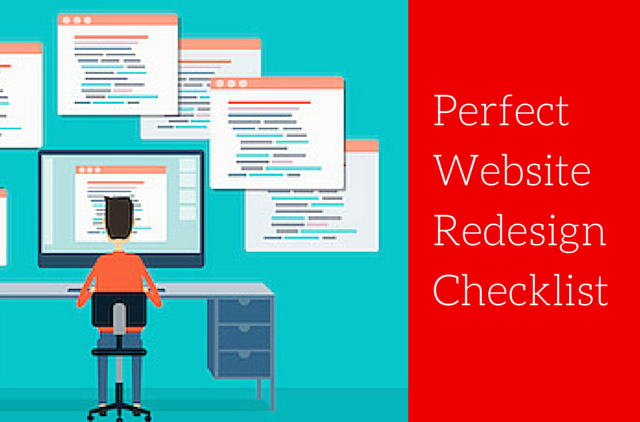
I rarely encounter a business that simply doesn’t yet have a website. Regardless of the bizarre reports that still contend 50% of all small business owners don’t have a website. (See Inc)
Now, what I do encounter most of the time is a small business that needs a total site makeover or redesign. It’s not that they were just awful in the first place, (well, some were) it’s that every site, just like every business, needs to evolve. That means if your current site design is around two years old it needs some attention.
But, before you rush out and give a designer the keys to your site, take steps to ensure you don’t unknowingly undue all the good you’ve accomplished with your previous site.
Eager designers don’t mean harm when they create a new design, they just need more information, and that’s where you come in. Before you even visit a WordPress theme designer arm yourself with some information that can help them make good decisions about what stays and what goes in your current configuration or take the risk of losing all that hard earned search traffic.
Now, I’m not suggesting you simply hang on to SEO gains over things like better navigation, visitor usability, and conversion, but don’t throw everything out just for something that looks more modern.
Use this checklist as you embark on a site redesign as a way to capture all existing elements and consider content needs, edits and issues before the project starts.
- Do you have access to Google Analytics? – I know, weird question, but you might be surprised how many sites have analytics installed the owners have no idea how to access the data.
- Do you have access to Google Search Console (formerly webmaster tools) – I frequently find site owners who have never bothered to connect their sites here and use this invaluable resource
- Have you evaluated domain suitability and value and checked expiration? – Carefully and I mean carefully consider if your current domain is even right for your business. Certainly this is a good time to check and make sure your desired domain isn’t set to expire anytime soon. (Quick check WhoIS)
- Have you cataloged all pages and current issues? – Use Screaming Frog to create a spreadsheet of all of your pages and any currently broken links or crawl errors.
- Have you added Google Analytics data for pageviews, bounce rate and time on page to a spreadsheet to help make assessment on content to keep? By adding this kind of data to your spreadsheet you might learn about some pages that are receiving a surprising amount of traffic or links.
- Have you ranked your spreadsheet content? A= keep no edit, B=keep edits needed, C= drastic rewrite or dump? This step involves your overall business and marketing strategy so you’ll need to consider how you want to position your business and your editorial calendar moving forward to make some of this decisions.
- Have you audited any lead capture/landing pages/forms? If you’re capturing email addresses for a newsletter, ebook or webinar series you’ll want to make sure you take note of these for the redesign. It’s easy to lose track of landing pages because they are often buried away from the main navigation.
- Have you audited SEO for ranking pages? Screaming Frog can give you information about pages that already rank for desired terms. If these terms are still relevant, you’ll want to think long and hard about how to keeps these pages intact.
- Have you audited permalink structure? A site redesign might be the time to analyze whether you want those ugly numbered URLs for your blog posts or the default date added. Most sites today are moving to keyword-rich URLs for all content (Don’t worry, I’m headed there in a month or two myself.)
- Have you analyzed current backlinks? Use a tool like ahrefs to see if any sites are sending significant traffic to pages. You’ll want to use some of this information to make determinations about leaving pages as is or even permanently redirecting the pages to eliminate creating too many broken links. (You might also consider some links that need pruning too.)
- Have you designed a 301 permanent redirect strategy if needed? If you’re making any dramatic URL changes, you’ll want to tell the search engines that your blog posts still exist they’re just at a new address. Make sure you work this through and test it thoroughly before you launch. The Yoast SEO Plugin can help with 301s
- Have you evaluated current plugins for use? A redesign is a great time to reconsider your current plugin use. Plugins are a big resource drag and a security hole – less is better.
- Have you evaluated needed integrations (CRM, ESP, Shopping cart, etc.) Finally, if you currently have some integration with other 3rd party tools or client portals, you’ll want to note the need for these and make sure you can share this information with your designer.
The steps above may seem like a lot of work, but it will save you a ton of work, worry, and headache in the end. In fact, if you start working with a designer and they don’t ask you for this information up front, you should be concerned.
To view the original article Click Here

No comments:
Post a Comment